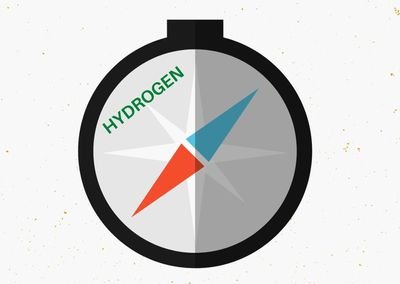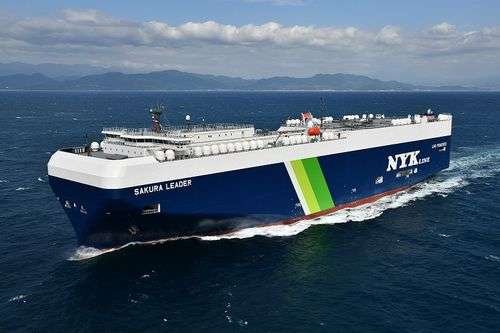Is hydrogen on the compass for the shipping industry?

The shipping industry is considered a backbone of global trade and accounts for around 90% of the total global trade. With such an enormous share, the vessels are also leaving carbon trails behind. The shipping industry emission is reaching 3% and is tiding. The International Maritime Organization (IMO) wants to halve emission by 2050 from its 2008 levels. However, the agency warns that achieving such a target is only possible if zero-emission ships are deployed by 2030. While the time is running out, some shipping companies are indecisive about which alternative fuel-based ships to order, as explained in our previous article.
The maritime industry emitted around 1,056 million tonnes CO2 in 2018 versus 962 million tonnes in 2012, according to the IMO. It is estimated that ships are using approximately 84% heavy oil, 13% diesel oil and 3% liquefied natural gas (LNG). Obaid Shah belives that one of the short-term solutions that some shipping companies consider is to use LNG because it emits less carbon dioxide than other fossil fuel. It will be easy for ships to switch to hydrogen when economically feasible.

Recently, NYK added ‘Sakura Leader’, a pure car and truck carrier (PCTC) that uses only LNG as the ship’s primary fuel. It was Japan’s first LNG powered PCTC. NYK is positioning LNG fuel as a bridge-solution to reduce emission. It plans to convert all its newly built PCTCs to LNG-fuelled vessels in a decade, and move to hydrogen and ammonia from the mid-2030s.

Japan is not alone of using LNG as a temporary swap for hydrogen, South Korea has also recently announced its plan to develop mass hydrogen supply infrastructure by 2030, with LNG vessel filling the vacuum in the interim.
So far, hydrogen fuel cell-based vessels are usually developed at a small level. In 2015, a group of Japanese companies which included Toda Corporation, Nippon Kaiji Kyokai and Nagasaki Institute of Applied Science developed a fuel cell based 13 meters ship with a 5.2 tonnes weight.
Norway’s Havyard Group ASA , a marine and maritime technology company, has recently said that it is developing a hydrogen-powered cargo ship design for an undisclosed European entity. The group has now set up a spinoff company Havyard Hydrogen AS. The CHEK project (deCarbonising sHipping by Enabling Key technology symbiosis on real vessel concept designs) funded by the EU Horizon 2020 program, aims to tackle emission by combining low carbon energy sources and technologies such as hydrogen and electric batteries. The project will start in June 2021 and last for 36 months. It will test the technology on two ships one a Cargill bulk carrier and another is MSC Meraviglia class cruise ship.
Last year, a group of Japanese companies (utility Kansai Electric Power, energy company Iwatani, shipbuilder Namura Shipbuilding, the state-owned Development Bank of Japan and the Tokyo University of Marine Science and Technology) partnered to explore the potential use of fuel cells technology in commercial shipping. They will build a 60 tonnes ship expected to be around 30 meters to carry about 100 passengers at ~20km/h. The vessel will be ready for the Osaka-Kansai Expo in 2025, at Yumeshima, Osaka, Japan. The intention is to operate it as a commercial passenger ship between Yumeshima (the location for expo) and famous tourists’ spots in central Osaka to promote decarbonisation awareness.
Under the plan, Iwatani will supply hydrogen and develop hydrogen stations for the ship; Kansai Electric Power will take responsibility for the charging system; the Development Bank of Japan, Namura Shipbuilding and Tokyokaiyo University will provide support for construction and funding. The cooperation is expected to expand to about ten organisations supporting the project.
Moreover, another Japanese consortium comprised of Nippon Yusen Kaisha (NYK), Toshiba Energy Systems, Kawasaki Heavy Industries, Nippon Kaiji Kyokai, and ENEOS started collaborations for building commercial fuel cell passenger vessel. The Japanese New Energy and Industrial Technology Development Organization (NEDO) has also approved the plan. The goal is to develop a medium-sized tourist vessel of about 25 meters length and a 150-tonnes weight to carry 100 passengers. The ship will run on high-power fuel cells, integrated with hydrogen fuel supply system and storage battery. The consortium aims to start construction works by 2023 and enter trial operation by 2024 with domestic cargo shipping starts by 2030.
Looking at these developments, it is evident that there is keen interest in using hydrogen to curb emission in the shipping industry. There have already been some practical examples of using fuel cell technology to power small ships. Indeed there are some issues around using hydrogen for instance safety and constrained supply. Notwithstanding, one of the main drawbacks with hydrogen is the high cost which is deterring shippers from embracing the hydrogen technology. Currently, hydrogen is highly uncompetitive compared to fossil fuels. But this would not be the case for long.
